#José Franco
Explore tagged Tumblr posts
Text
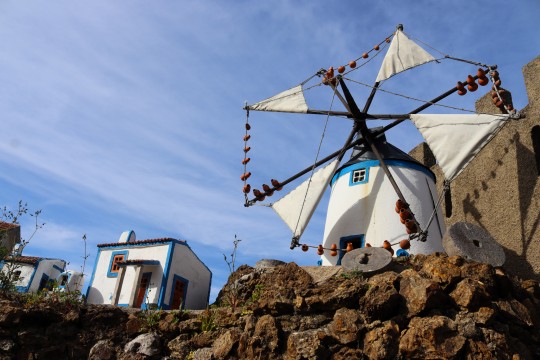
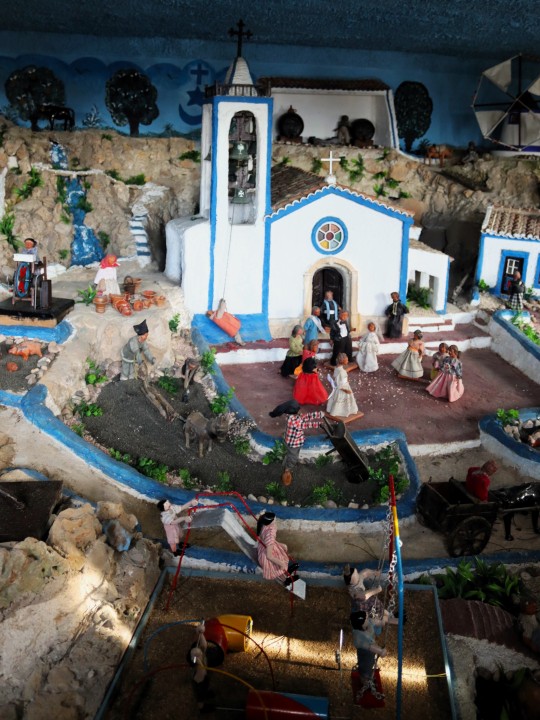
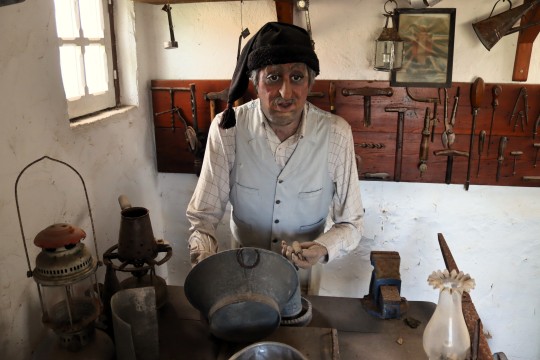
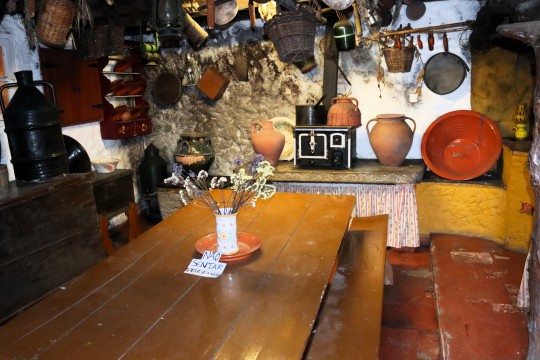

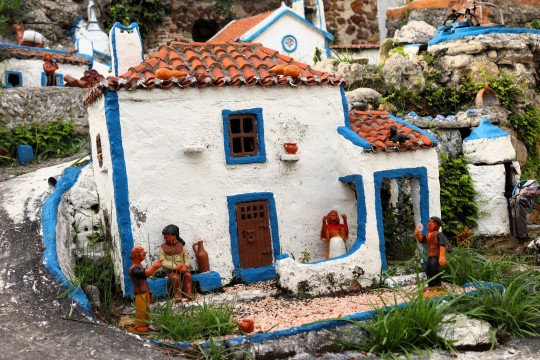
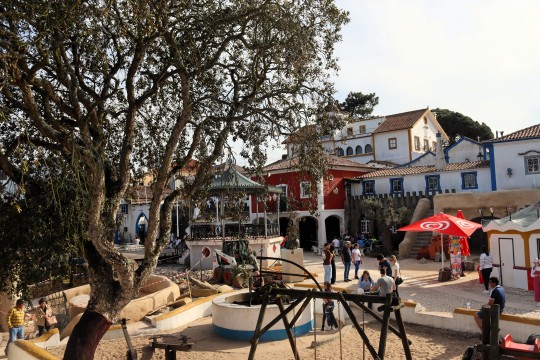
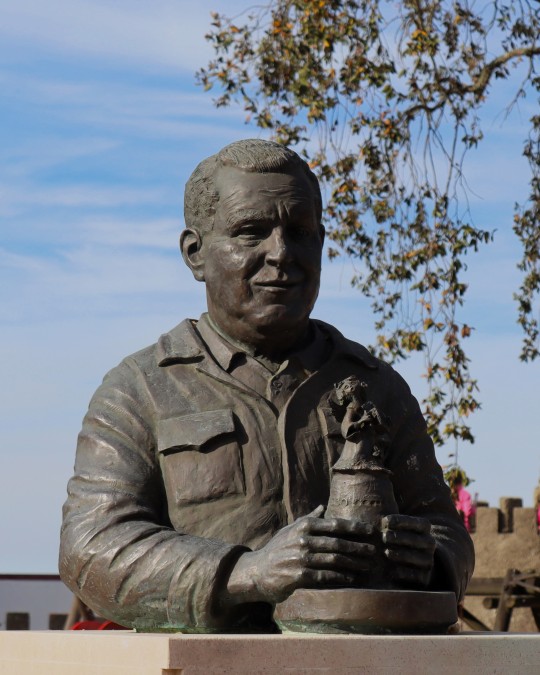
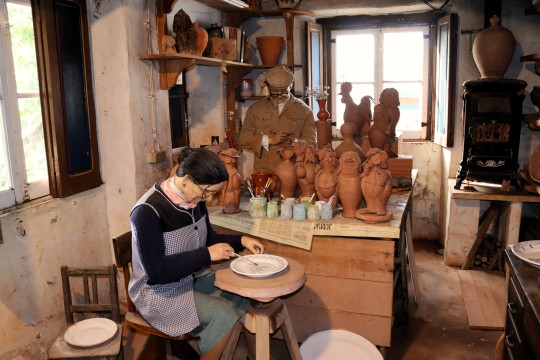
This is a very, very, very special place: the José Franco Museum-Village.
In the 1950s, a talented potter from the village of Sobreiro, José Franco (last two photos), decided, together with his wife, Helena, decided to create a scale-down version of a typical village from the rural areas of the Mafra County; this area in the northernmost part of the Lisbon Metropolitan Area is commonly known as the Zona Saloia - "Yokel Zone", in English. José Franco (1920-2009) feared that the memory of the rural world he once knew as a child could be lost, and being so, he created a mix of theme park and museum where the visitors can experience a romanticized version of the Yokel Zone as it was a century ago or so.
Everything in this place is magic, from the small stores and houses to the mock-ups of the rural villages of yesterday. It's impossible not to feel like a child again when you enter the school, the tinsmith's workshop, the winery, the windmill...
#Aldeia Museu José Franco#José Franco Museum-Village#Sobreiro#Zona Saloia#Grande Lisboa#Greater Lisbon#Área Metropolitana de Lisboa#Lisbon Metropolitan Area#Lisboa e Vale do Tejo#Estremadura#Portugal#José Franco#original photos#photographers on tumblr#photography
21 notes
·
View notes
Text

#movies#polls#django#django 1966#django movie#60s movies#sergio corbucci#franco nero#josé bódalo#loredana nusciak#requested#have you seen this movie poll
61 notes
·
View notes
Text

Happy #FrancoFriday ! El llanero (1963)
#Jaguar#El llanero#60s#Jesús Franco#Spaghetti Western#euro wester#1960s#60s movie#western#60s western#franco friday#jess franco friday#gif#gifs#my gif#my gifs#cult cinema#cult film#cult movie#The Jaguar#action film#action movie#action cinema#60s cinema#jess franco#José Suárez#Silvia Sorrente
14 notes
·
View notes
Text

7 notes
·
View notes
Text
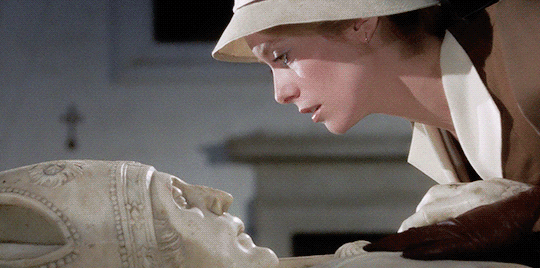
. When it comes to women and love, I've never seen any sin.
Tristana, Luis Buñuel (1970)
#Luis Buñuel#Julio Alejandro#Catherine Deneuve#Fernando Rey#Franco Nero#Lola Gaos#Antonio Casas#Jesús Fernández#Vicente Soler#José Calvo#Fernando Cebrián#José F. Aguayo#Pedro del Rey#1970
16 notes
·
View notes
Text
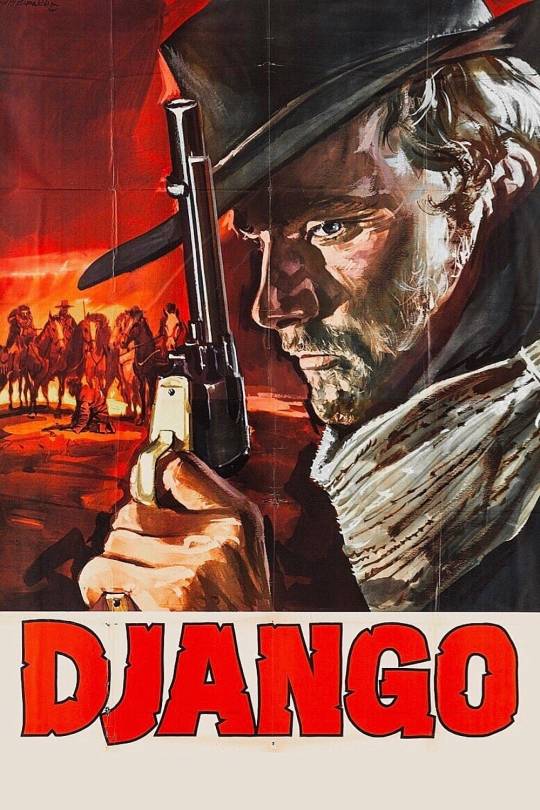
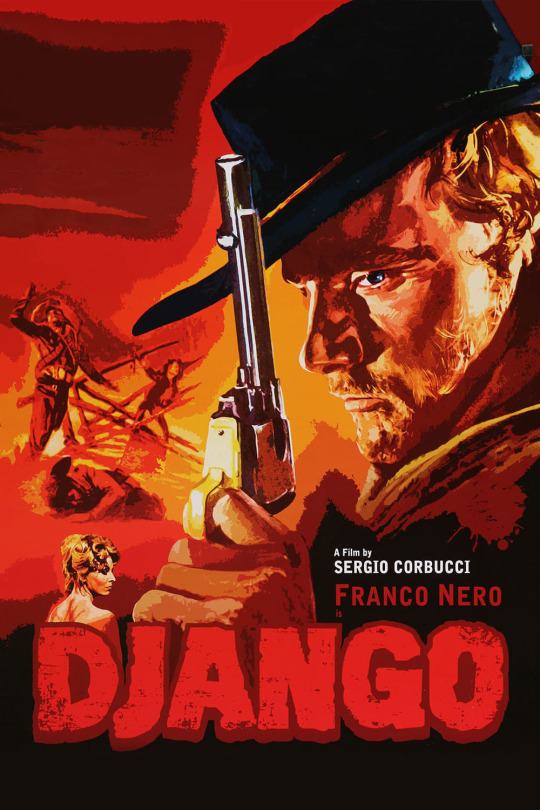
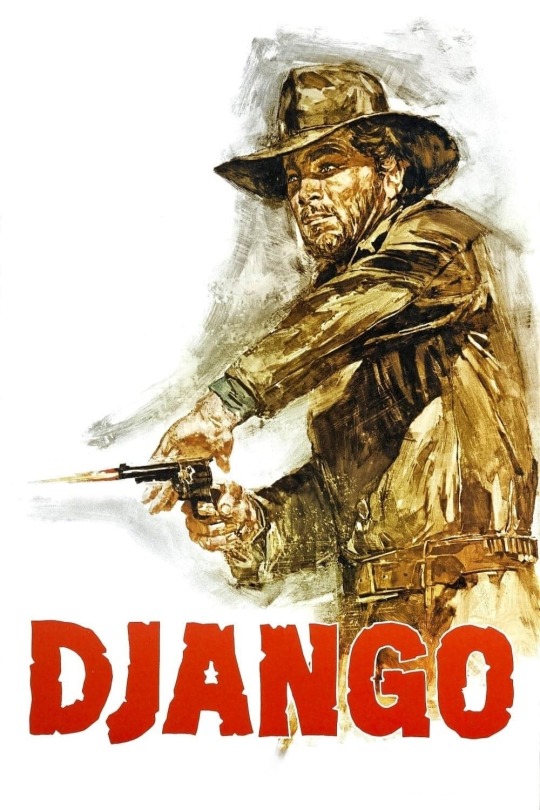
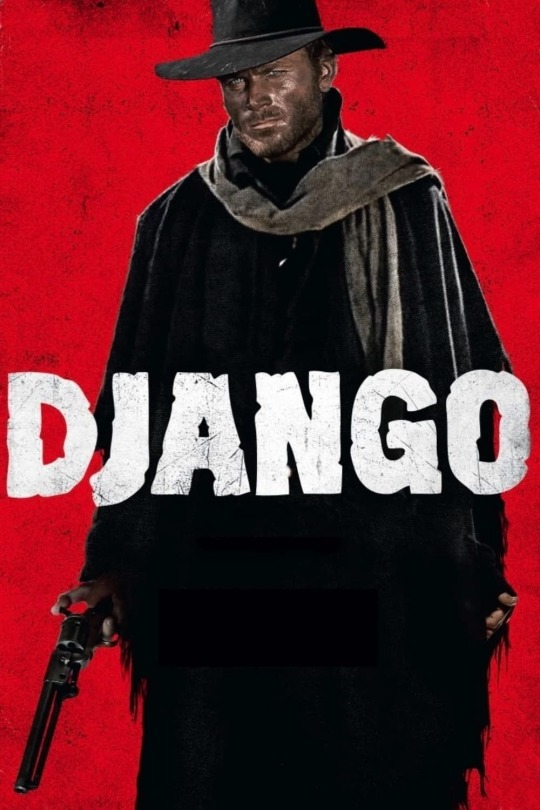
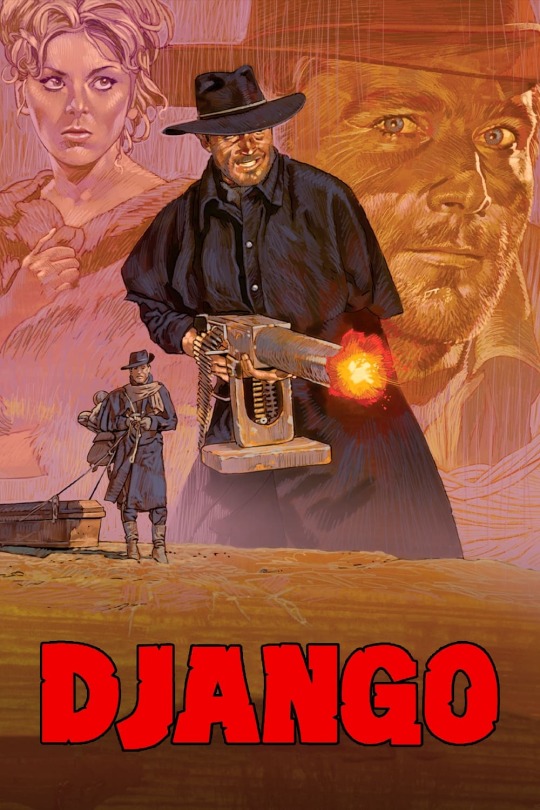
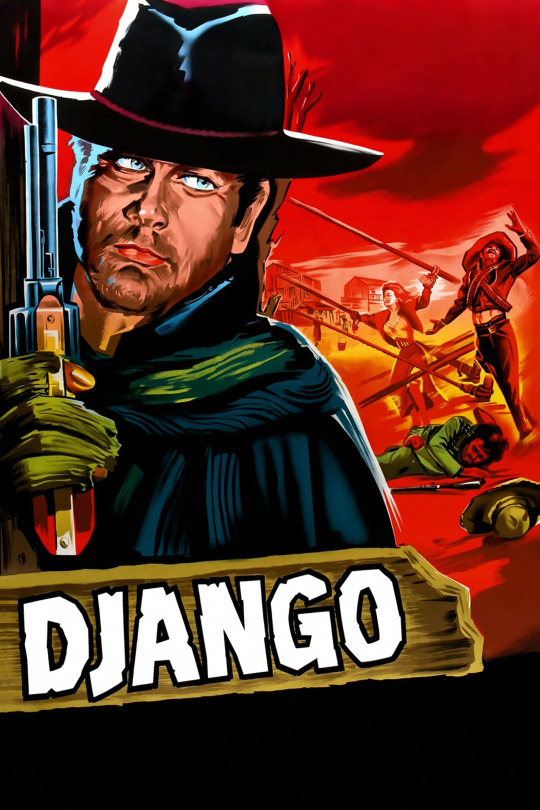
W A T C H I N G
Based on Yojimbo by Akira Kurosawa & Ryūzō Kikushima (both uncredited)
I've seen the movie about 4 times. Now, seeing it with good restoration. First time since my dad died. It's not the same without him to share it with.
My mom has her own interesting takes on it. She's got a retroactive crush on Franco Nero.😅 It's still as good as I remember it.
#DJANGO (1966)#FRANCO NERO#SERGIO CORBUCCI#Loredana Nusciak#José Bódalo#Ángel Álvarez#Eduardo Fajardo#Gino Pernice#SPAGHETTI WESTERN#watching
3 notes
·
View notes
Text
Compañeros (1970)
Directed by: Sergio Corbucci Genre: Western
CW: None
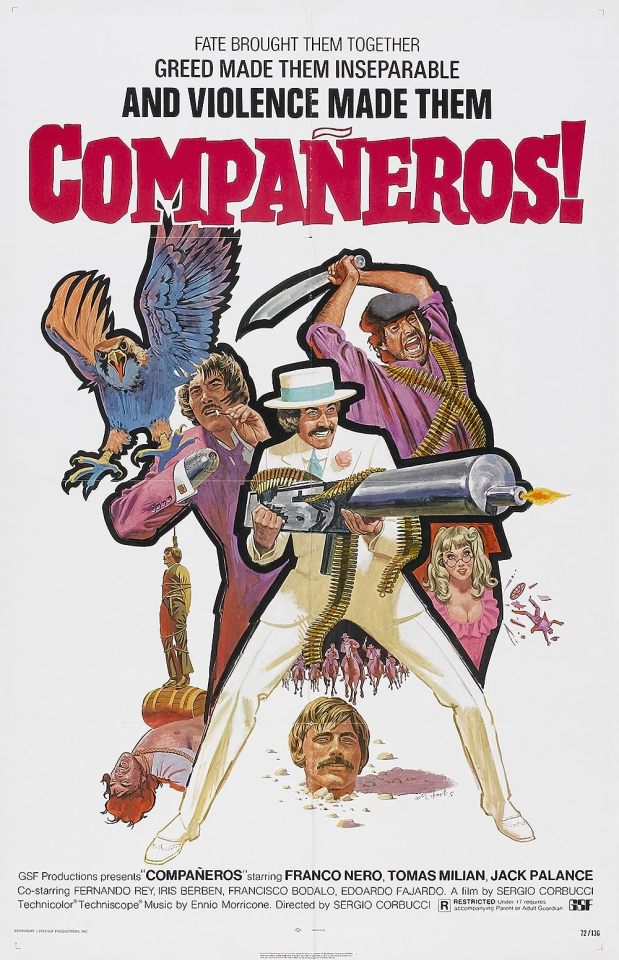

I love a movie that can get me to say things like, "And then they torture him with a guinea pig who's claws are reportedly strong enough to dig through solid ground."
Like what an interesting thought to have while watching a movie! It's exactly what happens in it. If that sounds too silly to be enjoyable- fear not! You are in good hands.
Compañeros starts at the end with Lola (Iris Berben) running through a mostly empty looking town to its train station where two men face off. Between them, a statue. One of them calls the other Penguin. Interesting. It's a good place to start. It has made me adequately curious.
The movie is set during the Mexican Revolution and right after the flash forward, we see one of our two men, Vasco (Tomas Milian), celebrating with his men in town after a successful revolt. They are drinking and shooting effigies of the president. Lola is there as well though she has much more hair than she did in the intro scene. She meets Vasco first and he assaults her which I must say felt completely unnecessary. She doesn’t need a reason to dislike him. She doesn't subscribe to his use of violence to win the revolution, and we later find out she leads a different band of rebels. Not to mention the fact that Vasco will soon cut off her hair which feels a far more appropriate reason for her to immediately dislike him.
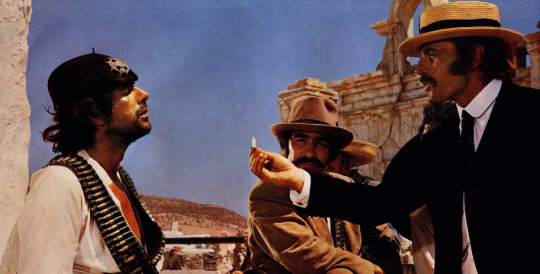
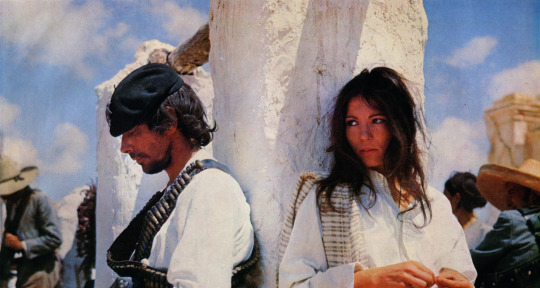
Of note here is that I watched a slightly shorter version of this movie. I only know this because there is a boot shining scene where Mongo (José Bódalo), one of the antagonists, hires Vasco to his cause at about this point in the movie. It was not in the version I watched on Tubi. All things considered, I do think that such a scene is unnecessary for establishing the characters of Vasco and Mongo. I don't know if there were any other changes between the two versions but the difference in runtime was just about 5 minutes so I don't suspect a whole lot got cut.
At the train station a Polish mercenary is arriving in the same town. His name is Yodlaf Peterson (Franco Nero) but you probably won't remember that and it's frankly unimportant because his real name is the pet name Vasco gives him- Penguin.
Vasco and Penguin do not hit it off, in fact it seems Vasco was soon to kill Penguin if not for Mongo showing up shortly thereafter. Penguin is here to sell guns to Mongo after all.
Of course would you look at that? The money he's to be paid is being kept in a safe that no one can get into and the only man who knows the combination is another revolutionary named Xantos (Fernando Rey) who is currently in Texas. Xantos practices a no violence approach and it's implied at this point that Mongo really only cares about the money he could make from the revolution and not its values.
Penguin resolves that he will track down this Xantos entirely with the intention of charging Mongo more and Mongo makes Vasco go with him. So, now about thirty minutes in, our two have teamed up. I really like the beginning of this movie for the most part. In particular, Penguin has a lot of charming scenes where he worsens his relations with Vaso and is just generally entertaining.

Which on that- this movie is a very homoerotic western. It’s not Catlow (1971) levels of homoeroticism but by god it’s close! Granted, this genre is sort of built for homoeroticism. Your leads are almost always men so all your most important scenes and moments of character development are about, for, and between men. It’s incredibly easy to project a romantic interpretation onto that. But Compañeros seems unusually romantic at some points. For example, in the beginning of the movie Penguin gives a dollar to Vasco, and Vasco proceeds to wear it as a necklace the whole rest of the movie. And the coin comes back a lot! There is also the fact that save one another frequently. It does one well to remember that if this were any other genre and one of the two was a woman, they would be falling in love by the end of the movie.
Vasco and Penguin start their journey on horseback and then switch to the train. The scene is a little cute actually because they're just nestled together in the seat. Unfortunately these two cannot escape trouble for long and that comes in the way of Lola and her rebels. The pair get away and back on the train but then Penguin disconnects the cars from the engine, leaving Vasco on his own.
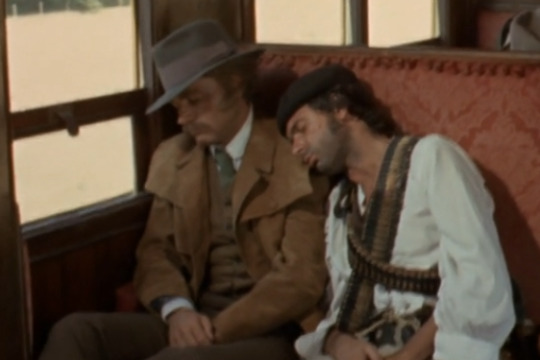
Now the meat and potatoes of this movie is a lot of fun! I haven’t encountered a western villain this hokey in awhile and I must say that Jack Palance as John, the man with a wooden hand, is utterly brilliant. He’s slimy, conniving, and somehow as sinister as he is silly. He wears a cape and has a falcon named Marsha as a familiar.
Him and Yodlaf have history. In a biblical sense you might say. And I mean that as both a suggestive joke about their relationship, but also as a pun on the actual events that transpired between them.You see, on their last job together Penguin left John for dead and John was literally crucified. He only managed to get away because Marsha ate through his hand. What a backstory!
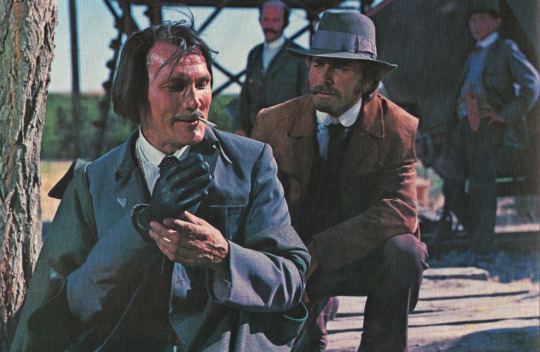
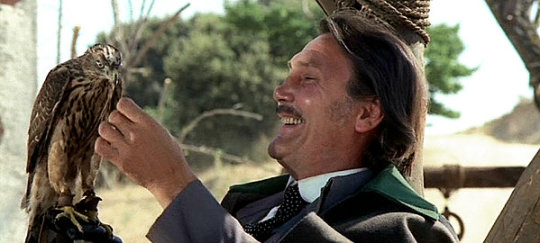
Once Penguin gets off the train he sees Marsha and John. It’s here we learn of his amazing backstory and John leaves Penguin precariously hung from a post where he must balance on a barrel or choke to death. Marsha stands nearby waiting to eat him or something. So of course, because this is a movie, Vasco shows up in time to gloat and then save his life.
I really love this scene. It was used in some iterations of the posters. Giving very Spider-man and MJ. Vasco even comments on how beautiful and like the sky Penguin's eyes are.
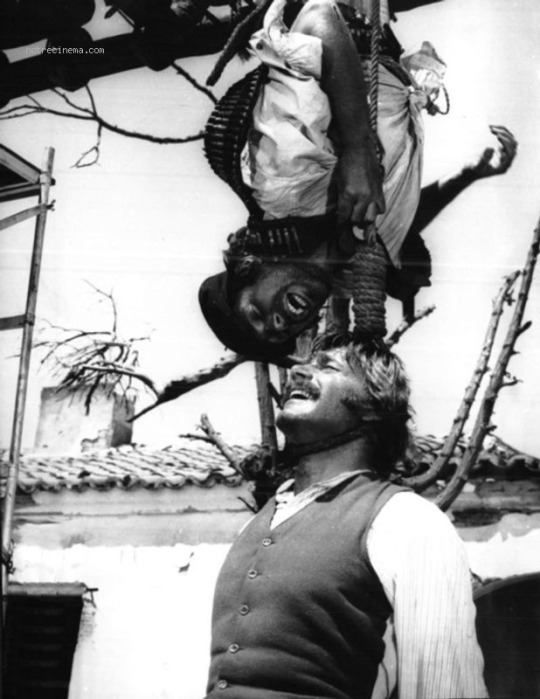
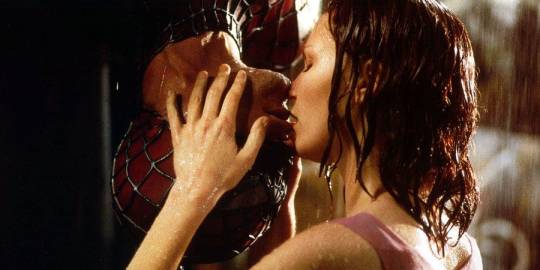
Now without a train we have an excuse for this bumbling journey to last longer and for more chaos to ensue. This is your Midnight Run of cowboy movies if you will. The actual goal is straightforward but the progress our leads make is bumbling because of their clashing personalities and outside forces (John and both Mexican and American armies) wanting to thwart their efforts. I have a soft spot for movies like this.
In town, Penguin meets with a prostitute he knows. She helps them get into a military camp to break out Xantos but before she does that, Penguin suggests she sleep with Vasco. When Penguin goes to find Vasco later, he’s in a state of shock lying on the bed with his boots off and lipstick on his face muttering about how she’s blonde everywhere. When Penguin asks what happened, the prostitute replies, “It’s too much of a shock, I guess.” I do not know if Vasco will beat the allegations…
But hey, neither is Penguin because while saving Xantos he announces himself by saying “I’m the Swede, but they call me Penguin.”
Saving Xantos is an easier task than some of the other events that befall our leads and so about an hour in we are on our way back to Mongo. Xantos is very steadfast in his beliefs and during their ride repeatedly tries to talk to Vasco and convince him that Mongo doesn’t have his best interests at heart.
Xantos doesn’t try to convince Penguin because Penguin will literally join anyone’s side for whichever slice of the pie is bigger. He’s consistent to say the least, and in a way perfectly reliable because of it.
Penguin tries to abandon Vasco overnight and this time it seems to work! Vasco gets caught by John and this is where we see the vile, contemptible guinea pig that is said to render flesh. It is put in a basket tied to Vasco’s bare chest. At first Vasco laughs because it’s ticklish, but then he begins to scream and call out for Penguin. Xantos refuses to go onward without saving Vasco and so Penguin goes to get him back.
Back on the road again, Xantos finds baby turtles. He remarks how unusual it is for this breed of turtle to be here and begins to collect them all. This seems like a really odd scene but actually it is hilariously relevant because when Xantos gets captured by John while running away from our two boys, he starts to leave the turtles like bread crumbs. This movie has a lot of things in it that are so beyond expectations.
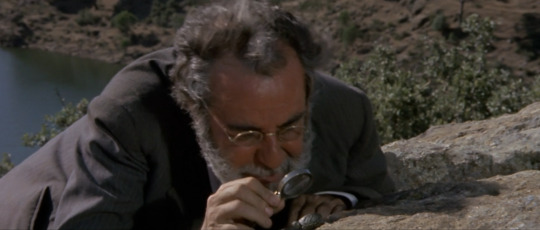

Now with the aid of Lola, our team goes to get Xantos. Following that, John makes a move on Mongo and suggests they team up and bait Xantos in to kill him. John is hoping to get the Penguin with him.
So thus we are led into our final confrontation! Or well sort of. It sort of feels like this movie ends ten times but we’ll get to that. Xantos goes alone to confront Mongo and Penguin and Vasco both follow. Penguin takes a different route so he can spot John’s trap for Xantos and fires on the supports of the tower he’s in. Mongo’s men come all running out and basically Vasco and Penguin take down the lot of them. During this scene Vasco gets fatally shot, but what do ya know? THE BULLET HIT THE DOLLAR COIN HE WEARS AROUND HIS NECK.
Something about this scene is like what I imagine seeing a unicorn would be like. Rapturous and euphoric, and at the same time I cannot believe it’s happening and that my eyes and ears beheld it.
At the end of the fight Mongo gives up. He’s alone anyway so, yeah he better. Xantos convinces Vasco not to kill him, though the effort is moot because Mongo proves to be treacherous again. He’s about to kill Xantos when he is fired upon by all of Xantos’ other rebels who've finally shown up. Xantos then gives Penguin the combination for the safe and it turns out it didn’t have any money in it. Just the promise of money. Penguin looks like he’s about to finally snap but he soon reconciles the loss in a different way.
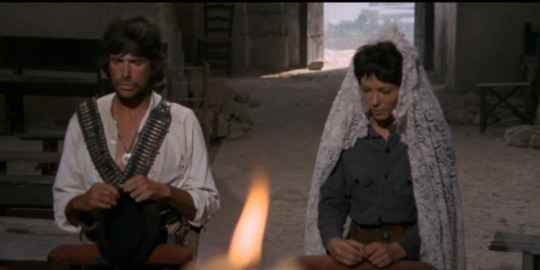
You see all the while Vasco and Lola have been falling in love. Or I mean I guess? Vasco is suddenly far more appealing when he’s on the write side of the revolution and yeah it sucked when he cut off her hair, but it was really romantic when he revealed he’d been storing it under his hat to remind him of her.
I expected this turn of events from the movie, but it doesn’t really justify it. I think the actors do fine together and convince me this matters, but the events that transpire between them leave a lot to be desired. I mentioned how Vasco and Lola meet and that’s sort of a huge vibe killer for their relationship to me. I really think the movie would have made way more sense if that scene just wasn’t in there at all. Vasco doesn’t really seem the type of person to act that way for the entire rest of the film and his removing her hair worked better on its own.
But I digress, they are in love now and Lola will only be with him if they get married. They have no priest but they instead will use a statue of San Bernardino. As they are finishing their vows, from the roof Penguin steals the statue and cackles. You see, it was the only thing of value in the town and he could never leave empty handed and now we see our character back in the beginning. They are about to have a duel but then John and his couple remaining men catch up to them, and Vasco and Penguin shoot them instead of each other.
Xantos is killed by John and Vasco invites Penguin to fight with him. Penguin declines but as he’s leaving he sees the Mexican army on its way so he rides back into town to join them for an incoming fight, shouting “Compañeros! Vamos a mator, Compañeros!” Vasco smiles, beautifully I might add, and the movie ends.
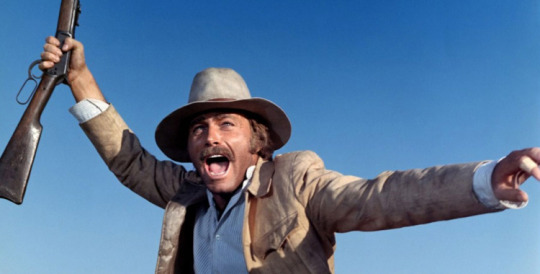

Really good stuff. Really great stuff! This was an absolutely blast of a good time. I did enjoy myself a lot while watching it. I don’t know if the movie will hold up as well on rewatches though. This movie is just under two hours and sometimes you can really feel that runtime. Most of the time you don’t feel it, but it does have moments that drag. Like the ending. Additionally some of the scenes, as mentioned already, are unnecessary. They don’t destroy my overall enjoyment of the movie but they are things I might skip when I rewatch it.
I really loved the acting, especially from Nero, Milian, and Palance. They are a blast to watch and captivated me the whole way through. The interactions between Vasco and Penguin are just full of chemistry and are very entertaining.
The score was done by Ennio Morricone whom I generally always love. This was not my favorite score by him. I liked the main theme but not so much some of the other tracks. They reminded me of scores of his I liked better from My Name is Nobody (1973) and Two Mules for Sister Sara (1970).
All in all I’m feeling this movie has earned a 6.7/10.
#gay af if you ask me#western#Spaghetti western#western movie#70s#70s movie#Compañeros#Compañeros 1970#franco nero#Tomas Milian#Jack Palance#Fernando Rey#Iris Berben#José Bódalo#Ennio Morricone#Sergio Corbucci
15 notes
·
View notes
Text

Robot Dreams (2023, Spain/France)
There exists an assumption that one has to be an animator in order to direct an animated film. While most cinephiles might reflexively point to Wes Anderson (2009’s Fantastic Mr. Fox, 2018’s Isle of Dogs), I think Isao Takahata (1988’s Grave of the Fireflies, 1991’s Only Yesterday) the exemplar here. Even so, a non-animator taking the reins of an animated movie is rare. Into that fold steps Pablo Berger, in this adaptation of Sara Varon’s graphic novel Robot Dreams. Moved after reading Varon’s work in 2010, Berger acquired Varon’s “carte blanche” permission to make a 2D animated adaptation however he saw fit. Like the graphic novel, Berger’s Robot Dreams is also dialogue-free.
Beginning production on Robot Dreams proved difficult. Berger originally teamed with Ireland’s Cartoon Saloon (2009’s The Secret of Kells, 2020’s Wolfwalkers) to make Robot Dreams, but these plans fell wayside when the COVID-19 pandemic hit. His schooling in how to make an animated film would come quickly. Despite an increased appetite for Spanish animation worldwide (2019’s Klaus, 2022’s Unicorn Wars), poor distribution and marketing of domestically-made animated movies has often meant Spanish animators have roved around Europe looking for work. With a pandemic sending those Spanish animators home, Berger and his Spanish and French producers set up “pop-up studios” in Madrid and Pamplona, purchased the infrastructure and space needed to make an animated feature, and recruited and hired animators. Berger’s admiration of animated film fuses the lessons of silent film acting (Berger made a gorgeous silent film in 2012’s Blancanieves; in interviews, Berger cites Charlie Chaplin’s movies as having the largest influence on Robot Dreams, alongside Takahata’s films) to result in one of the most emotionally honest films of the decade thus far – animated or otherwise.
Somewhere in Manhattan in the late 1980s in a world populated entirely of anthropomorphized animals, we find ourselves in Dog’s apartment. Dog, alone in this world, consuming yet another TV dinner, is channel surfing late one evening. He stumbles upon a commercial advertising a robot companion. Intrigued, he orders the robot companion and, with some difficulty, assembles Robot. The two become fast friends as they romp about New York City over a balmy summer, complete with walks around their neighborhood and Central Park, street food, trips to Coney Island, and roller blading along to the groovy tunes of Earth, Wind & Fire. At summer’s end, an accident sees the involuntary separation of Dog and Robot, endangering, for all that the viewer can assume, the most meaningful friendship in Dog’s life and Robot’s brief time of existence.
youtube
If you have not seen the film yet, let me address a popular perception early on in this piece. Set in a mostly-analog 1980s, Robot Dreams contains none of the agonizing over artificial intelligence or automatons in fashion in modern cinema. There is no commentary about how technology frays an individual’s connections to others. Robot is a rudimentary creation, closer to a sentient grade school science project than a Data or T-1000.
So what is Robot Dreams saying instead? Principally, it is about the loving bonds of friendship – how a friend can provide comfort and company, how they uplift the best parts of your very being. For Robot, the entirety of their life prior to the aforementioned accident (something that I, for non-viewers, am trying not to spoil as Robot Dreams’ emotional power is fully experienced if you know as little as possible) has been one of complete estival bliss. Robot, in due time, discovers that one of the most meaningful aspects of friendship is that such relationships will eventually conclude – a fundamental part of life. And for Dog, Robot’s entrance into his life allows him to realize that, yes, he can summon the courage to connect with his fellow animals, realizing his self-worth. Perhaps Dog gives up addressing the accident a little too easily, but the separation of friends has a way of complicating emotions and provoking peculiar reactions.
On occasion, Robot Dreams’ spirit reminds me of Charlie Chaplin’s silent feature film period (1921-1936) – in which Chaplin, at the height of his filmmaking prowess, most successfully wove together slapstick comedy and pathos. On paper, pathos and slapstick should not mix, but Chaplin was the master of combining the two. No wonder Berger fully acknowledges the influence of his favorite Chaplin work, City Lights (1931), here.
Across Robot Dreams, Berger inserts an absurd visual humor that works both because almost all of the characters are animals and despite the fact almost everyone is an animal. A busking octopus in the New York City subway? Check. The image of pigs playing on the beach while sunburnt to a blazing red? You bet. A dancing dream sequence where one of our lead characters finds himself in The Wizard of Oz performing Busby Berkeley-esque choreography on the Yellow Brick Road? Why not? Much of Chaplin’s silent film humor didn’t come from his Little Tramp character, but the silliness, ego, and/or absentmindedness of all those surrounding the Tramp. In City Lights, humor also came from the rough-and-tumble edges of urban America. Such is the case, too, in Robot Dreams, with its blemished, trash-strewn depiction of late ‘80s New York (credit must also go to the sound mix, as they perfectly capture how ambiently noisy a big city can be).
Amid all that comedy, Berger nails the balance between the pathos and the hilarity – pushing too far in either direction would easily undermine the other. The film’s melancholy shows up in ostensibly happy moments and places of recreation: a realization during a rooftop barbeque lunch, the emptiness of a shuttered Coney Island beach in the winter, and an afternoon of kiting in Central Park. It captures how our thoughts of erstwhile or involuntarily separated friends come to us innocuously, in places that stir memories that we might, in our present company, might not speak of aloud.
As the film’s third character, New York City (where Berger lived for a decade) is a global cultural capital, a citywide theater of dreams, a skyscraper-filled signature to the American Dream. To paraphrase Sinatra, if you can make it there, you can make it anywhere. But it tends to grind those dreams into dust. The city’s bureaucratic quagmire is lampooned here, as is its reputation for mean-spirited or jaded locals. Robot Dreams also depicts the visual and socioeconomic differences between the city’s boroughs. With such a jumble of folks of different life stations mashed together, Dog’s people-watching, er, animal-watching during his loneliest moments makes him feel the full intensity of his social isolation. With Robot, however, Dog has a naïve companion that he can show the best of the city to. Robot has no understanding of passive-aggressive or outright hostile behavior (see: Robot hilariously not understanding what a middle finger salute is – the only objectionable scene if you are considering showing this to younger viewers). Within this city of contradictions, Dog and Robot’s love is here to stay.
Though he is no animator, his experience in guiding Spanish actresses Ángela Molina, Maribel Verdú, and Macarena García in Blancanieves through a silent film was valuable. In animated film, there is a tendency towards overexaggerating emotions. But with Robot Dreams’ close adaptation of the graphic novel’s ligne claire style and the nature of Robot’s face, the typical level of exaggeration in animation could not fly in Robot Dreams. Berger and storyboard artist Maca Gil (2022’s My Father’s Dragon, the 2023 Peanuts special One-of-a-Kind Marcie) made few alterations to the storyboards, fully knowing how they wished to frame the film, and hoping to convey the film’s emotions with the facial subtlety seen in the graphic novel. Character designer Daniel Fernandez Casas (Klaus, 2024’s IF) accomplishes this with a minimum of lines to outline characters’ bodies and faces. Meanwhile, art director José Luis Ágreda (2018’s Buñuel in the Labyrinth of the Turtles) and animation director Benoît Féroumont (primarily a graphic novelist) visually translated Sara Varon’s graphic novel using flat colors and a lack of shading to convey background and character depth (one still needs shading, of course, to convey lights and darks of an interior or exterior).
Robot Dreams’ nomination for the Academy Award for Best Animated Feature this year was one of the most pleasant surprises of the 96th Academy Awards. In North America, Robot Dreams’ distributor, Neon, has pursued an inexplicable distribution and marketing strategy of not allowing the film a true theatrical release until months after the end of the last Oscars. The film was available for a one-night special screening in select theaters in and near major North American cities the Wednesday before the Academy Awards. And only now (as of the weekend of May 31, 2024), Neon will release Robot Dreams this weekend in two New York City theaters, the following weekend in and around Los Angeles, with few other locations confirmed – well after interest to watch the film theatrically piqued in North America.
Alongside Neon’s near-nonexistent distribution and marketing of Jonas Poher Rasmussen's animated documentary Flee (2021, Denmark), one has to question Neon’s commitment to animated features and whether the company has a genuine interest in showing their animated acquisitions to people outside major North American cities. This is distributional malpractice and maddeningly disrespectful from one of the most acclaimed independent distributors of the last decade.
In Robot Dreams, Pablo Berger and his crew made perhaps the best animated feature of the previous calendar year. Robot Dreams might not have the artistic sumptuousness of the best anime films today, nor the digital polish one expects from the work of a major American animation studio. By film’s end, its simple, accessible style cannot hide its irrepressible emotional power. Its conclusion speaks to all of us who silently wonder about close friends long left to the past, their absence filled only by memory.
My rating: 8.5/10
^ Based on my personal imdb rating. My interpretation of that ratings system can be found in the “Ratings system” page on my blog. Half-points are always rounded down.
For more of my reviews tagged “My Movie Odyssey”, check out the tag of the same name on my blog.
#Robot Dreams#Pablo Berger#Sara Varon#Fernando Franco#Daniel Fernandez Casas#Benoît Feroumont#José Luis Ágreda#Maca Gil#Ibon Cormenzana#Ignasi Estapé#Sandra Tapia Diaz#Best Animated Feature#Oscars#96th Academy Awards#My Movie Odyssey
2 notes
·
View notes
Text
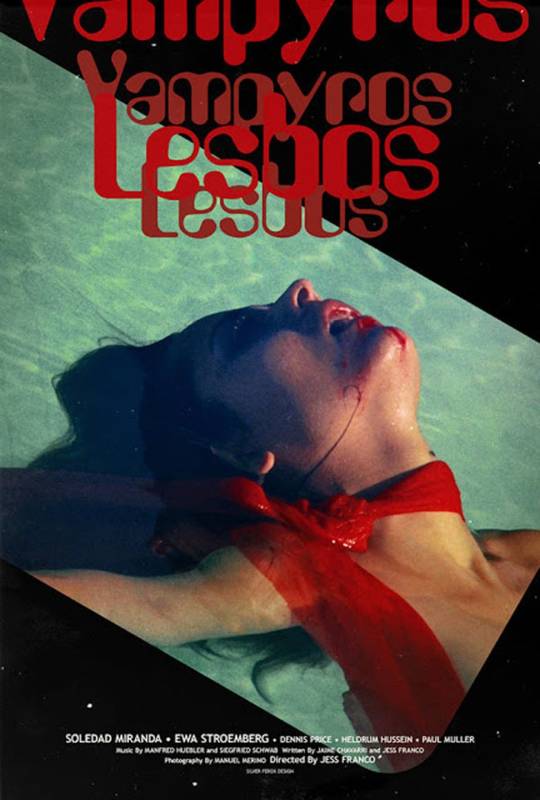
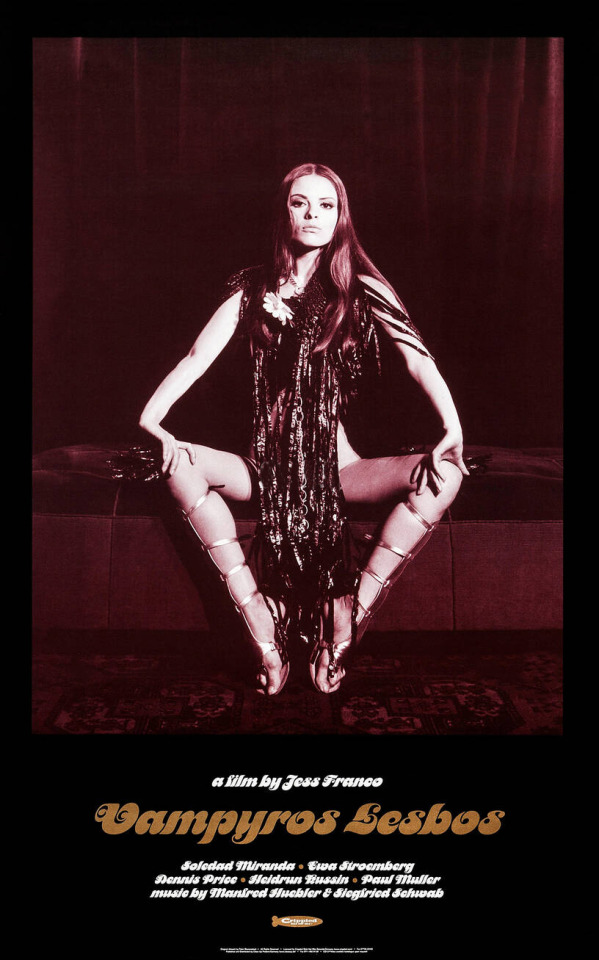



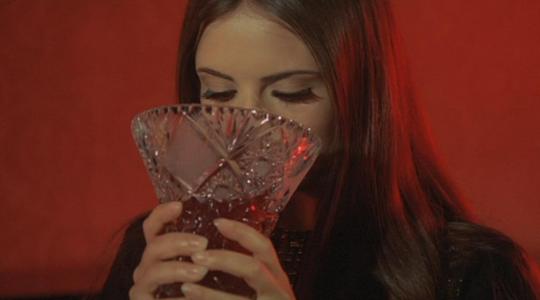
Vampyros Lesbos (Vampyros Lesbos: Die Erbin des Dracula) (1971) Jesús Franco
March 7th 2024
#vampyros lesbos#Vampyros Lesbos: Die Erbin des Dracula#1971#jesús franco#soledad miranda#ewa strömberg#dennis price#Andrea Montchal#Heidrun Kussin#José Martínez Blanco#paul muller#Paul Müller#lesbian vampires#Das Mal des Vampirs#Im Zeichen der Vampire#Schlechte Zeiten für Vampire
6 notes
·
View notes
Text










Il coltello di ghiaccio (Knife of Ice, 1972)
"The cult of the devil has never ceased to exist. It sounds absurd, but Satan-worshipping cults are flourishing everywhere. Some people have hell in their souls."
#Il coltello di ghiaccio#knife of ice#umberto lenzi#italian cinema#giallo#Antonio Troiso#carroll baker#alan scott#evelyn stewart#eduardo fajardo#silvia monelli#george rigaud#franco fantasia#dada gallotti#lorenzo robledo#mario pardo#olga gherardi#consalvo dell'arti#josé marco#carla mancini#rosa m. rodriguez#enormously fun Lenzi giallo‚ the last of four he made with star Carroll Baker; this is my favourite of them‚ and feels quite distinct from#the other three‚ swapping out the sleazy sex and bloody violence that characterised those movies for a greater emphasis on mystery thrills#all giallo owe some debt to the golden age of crime fiction (it's where the name comes from‚ from the yellow jacket reprints of those old#murder mysteries) but this feels particularly close in spirit to the works of for eg. Agatha Christie; the isolated mountain village‚ the#dark and stormy nights‚ sinister chauffeur‚ impaired and vulnerable herione‚ and the line up of suspects from respectable backgrounds (a#doctor‚ a priest‚ a mayor...). in some ways it's a cautious movie‚ a backwards step in a genre which was getting nastier and more graphic#and increasingly stylish and contemporary; but for that very reason it ISN'T safe‚ it's actually quite a ballsy move to make such an old#fashioned feeling film. but yeah i loved this; it doesn't have the reputation or love of Lenzi's other gialli but i just had such a good#time with this! super fun! loved it
13 notes
·
View notes
Text

José Eduardo Franco. Isabel Drumond Braga, História Global da Alimentação Portuguesa, 2023
2 notes
·
View notes
Text









Nine more photos from the wonderful José Franco Village-Museum.
This place is the sole reason why people have heard about the village of Sobreiro. Otherwise, it would be just another place lost between Mafra and Ericeira.
#Aldeia Museu José Franco#José Franco Museum-Village#Sobreiro#Zona Saloia#Grande Lisboa#Greater Lisbon#Lisboa e Vale do Tejo#Área Metropolitana de Lisboa#Lisbon Metropolitan Area#Estremadura#Portugal#José Franco#Original photos#photography#photographers on tumblr
14 notes
·
View notes
Text
Wonderkid Factory | Part 12 | Great At Home, Terrible Away!
#WonderkidFactory Part 12: Great At Home, Terrible Away! @1FSVMainz05 punch above their weight as a young side have the 5th-best home record and 5th-worst away record. And they finish 4 points behind Bayern in a fight for European football. Read here:
Mainz survived with relative ease in their first season back in Bundesliga. But the big challenge now facing Roberto Lazaró, moving into his third season in Germany, was to continue developing his young squad – some of whom were one year away from obtaining homegrown status. They were joined by more exciting prospects in striker Damián Jorge for £6.5m from Racing Club, winger Santiago Quiroga…
#1. FSV Mainz 05#Agustín#Andrea Occhiuzzi#Anthony Asamoah#Brajan Gruda#Bundesliga#Christian Adler#Damián Jorge#Daniel Schroder#De Nilson Barbosa#DFB-Pokal#FM24#Football Manager#Football Manager 2024#Football Manager 24#Franco Rodríguez#Hafedh Haddad#Jean-Pierre Candela#Jorge Carrilho#José Bertazzi#Justin Thielmann#Luis Gutiérrez#Mainz#Salvador Martínez#Santiago Quiroga#Santino Cerantola#Wonderkid Factory
0 notes
Text

Happy #FrancoFriday ! El llanero (1963)
#Jaguar#El llanero#60s#Jesús Franco#Spaghetti Western#euro wester#1960s#60s movie#western#60s western#franco friday#jess franco friday#gif#gifs#my gif#my gifs#cult cinema#cult film#cult movie#The Jaguar#action film#action movie#action cinema#60s cinema#jess franco#José Suárez#Silvia Sorrente
8 notes
·
View notes
Text
27 dicembre … ricordiamo …
27 dicembre … ricordiamo … #semprevivineiricordi #nomidaricordare #personaggiimportanti #perfettamentechic
2023: Lee Sun-kyun, attore sudcoreano. Lee inizia a studiare all’Università delle arti di Corea nel 1994, laureandosi in arte drammatica. Nel 2001 debutta in teatro. Raggiunge la notorietà nel 2007 grazie alle due serie televisive Hayan Geotab (Behind the White Tower) e Coffee prince 1 hojeom. Comincia quindi a dedicarsi al cinema d’arte recitando in una serie di film. Lee Sun-kyun ha sposato la…
#27 dicembre#27 dicembre morti#Anna Vita#Barbara Tarbuck#Bernard-Pierre Donnadieu#Calliope Sambucini#Carrie Fisher#Carrie Frances Fisher#Claude Gensac#Claude Jeanne Malca Gensac#Franco Giacobini#Harry Carey Jr.#Henry G. Carey#José Varela#Kally Sam#Kally Sambucini#Kelly Sambucini#Life#Morti 27 dicembre#Morti oggi#Natalia Pavlovna Paley#Noriko Sengoku#Reiko Mori#Thomas Hunter
0 notes
Text
'El ángel exterminador': La gran joya de Luis Buñuel
La Cineteca Nacional continua con su homenaje a Silvia Pinal y hoy es el turno de ‘El ángel exterminador’, otra de las grandes películas del cine mexicano, quizás la más recordada de Luis Buñuel y una de las grandes joyas en la carrera de Silvia Pinal. Reseña | ‘El ángel exterminador’ Estrenada en 1962, ‘El ángel exterminador’ es quizás la película más reconocida del director español Luis Buñuel…
#1962#Antonio Bravo#Augusto Benedico#Burguesía#Claudio Brook#Crítica#El Ángel exterminador#Enrique Rambal#Francisco Franco#Gabriel Figueroa#Jacqueline Andere#José Baviera#Luis Beristáin#Luis Buñuel#Salvador Dalí#Silvia Pinal#Surreal#Surrealismo#Suspenso#Terror#Viridiana
0 notes